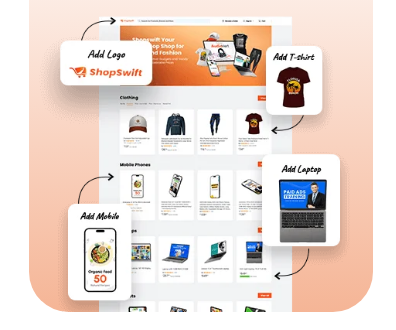
Boost User Interaction Through Thoughtful Web Page Design
Designing a website is about more than aesthetics—it’s about creating an experience that encourages users to stay, engage, and take action. Thoughtful Web page design plays a critical role in boosting user interaction, which can translate to higher conversions, stronger brand loyalty, and a better user experience.
To stand out in today’s competitive digital landscape, every detail of your Web page design should serve to engage and delight your audience. Here’s how a well-designed website can benefit your brand by significantly improving user interaction.
Why Web Page Design Matters for User Interaction
User interaction is a key measure of how users engage with your website. This could include clicking buttons, scrolling, subscribing to newsletters, filling out forms, or making purchases. Stats show that 94% of first impressions are design-related, meaning a visually appealing and functional website can spell the difference between retaining or losing a visitor.
Web page design matters because it sets the foundation for how easy and intuitive it is for users to engage with your site. A thoughtfully designed page can:
Make navigation seamless
Present content in an appealing and digestible way
Instinctively guide users toward desired actions
By focusing on strategies that prioritize user-centric design, you can create an environment where users feel at ease and motivated to interact more.
Benefits of Thoughtful Web Page Design
1. Improves Usability
A cluttered and confusing website deters users. A streamlined design ensures visitors can easily find what they’re looking for, whether that’s product information, blog articles, or contact details. Responsive design further enhances usability by ensuring the site performs seamlessly across all devices, from desktop to mobile.
By providing a clear layout, you empower users to engage with your site without frustration, naturally driving higher interaction rates. Easy navigation menus, intuitive paths, and strategically placed call-to-action (CTA) buttons are all part of designing for usability.
2. Enhances Visual Engagement
Users are drawn to websites that look good. By using harmonious color schemes, professional typography, high-quality visuals, and white space strategically, you create an environment that holds their attention longer.
Interactive visual elements, such as hover effects or engaging transitions, also add personality to your site, creating a memorable experience for visitors. A thoughtfully designed web page ensures consistency in visuals, enhancing your brand identity and fostering trust.
3. Speeds Up Decision Making
Users often come to websites to solve a problem or find a solution. Clear layouts, accessible product pages, and concise, engaging content help users make decisions faster. Adding subtle directional cues—like arrows, icons, or contrasting color CTAs—ensures they know where to go next, reducing cognitive load and eliminating distractions.
By designing with the user’s intent in mind, you move visitors seamlessly through the decision-making process, boosting conversions.
4. Builds Trust
Website credibility is directly tied to its design. Elements like mobile optimization, fast-loading pages, and consistent branding send the message that your business is reliable and professional. Thoughtful design also includes transparency—obvious pricing details, customer reviews, or trust badges instantly make users feel more secure in interacting with your site.
When users trust your platform, they’re more likely to engage, subscribe, share their information, or make a purchase.
5. Encourages Engagement Through Personalization
Designing a personalized experience is a surefire way to make users feel seen. With design elements that recognize past visitors or adapt dynamically to behaviors—like tailored recommendations, greeting options, or saved preferences—you’re encouraging longer interactions and return visits.